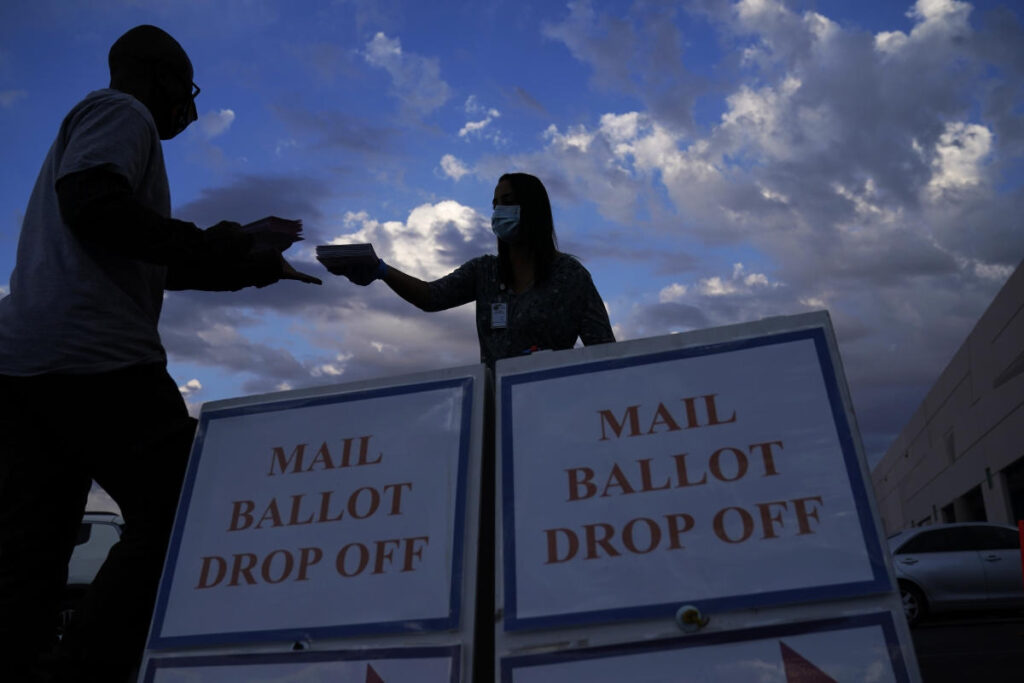The Nevada Supreme Court recently ruled that mail-in ballots that are smudged, have indecipherable postmarks, or lack postmarks altogether can be counted for up to three days following Election Day. This decision came after a challenge from state and national Republicans, including former President Donald Trump’s campaign, which argued that allowing such ballots to be counted would disproportionately favor Democratic voters. The ruling aligned with guidance provided earlier by Nevada Secretary of State Cisco Aguilar, who stated that ballots without a visible postmark should still be considered valid if received by 5 p.m. on the Friday following the election, which, this year, falls on November 8. Aguilar supported the ruling, emphasizing the importance of ensuring that voters are not disenfranchised due to circumstances beyond their control.
The court’s decision reinforced an earlier ruling from a state court judge and followed oral arguments presented to the seven-member court. Even though it has not been confirmed whether the plaintiffs will seek to have the ruling reconsidered, the court acknowledged that existing state law left room for ambiguity regarding the counting of ballots with unclear or missing postmarks. However, the justices concluded that state lawmakers intended to enhance voting freedom for Nevadans. This decision has raised concerns among Republican representatives, with critics claiming that it jeopardizes the integrity of elections in the state.
Since introducing universal mail voting in 2020, Nevada has been one of several states allowing all registered voters to receive mail-in ballots unless they choose to opt out. Voters can also participate in early voting or vote in-person on Election Day. As the impending election approaches, State data indicates that of nearly 2 million active registered voters, over 643,000 mail-in and early votes have already been cast, with registered Republicans making up nearly 40% of those votes. The legal arguments presented by the Republican National Committee suggested that allowing the counting of these ballots would predominantly benefit Democratic candidates, highlighting the partisan implications of the court’s decision.
Evidence presented during the hearings showed that the number of ballots without postmarks was minimal—a mere 24 out of over 383,000 cast in the June primaries. This indicates that postmark errors were largely attributed to the postal service’s random omissions. Moreover, the court noted a prior federal ruling that stated allowing ballots missing postmarks to be counted for a designated period establishes a presumption that those ballots were cast timely. This further emphasizes the theory that the potential for votes to arrive late does not inherently compromise the election process.
Furthermore, the court indicated that the Republican National Committee had failed to establish sufficient standing to demand a formal block on counting the ballots and did not demonstrate that they would experience “irreparable harm” as a result of counting them. Nevada’s status as a key battleground state means that the outcome of the presidential election is anticipated to be closely contested, compounded by the state being one of the few with all-mail elections. With several other legal battles occurring in Nevada regarding election protocols, the implications of this ruling could resonate significantly within the broader context of the upcoming election.
As the election date approaches, the U.S. Postal Service has been proactive in urging mail-in voters to submit their ballots promptly to ensure they arrive by the Election Day deadline. With active litigation surrounding election mail procedures and a tight electoral landscape, Nevada continues to grapple with the complexities of mail-in voting amidst ongoing debates over election security and voter accessibility. Divided opinions on election integrity create heightened tension as multiple lawsuits and court cases navigate the legal landscape, influencing voter confidence and participation in the electoral process.

